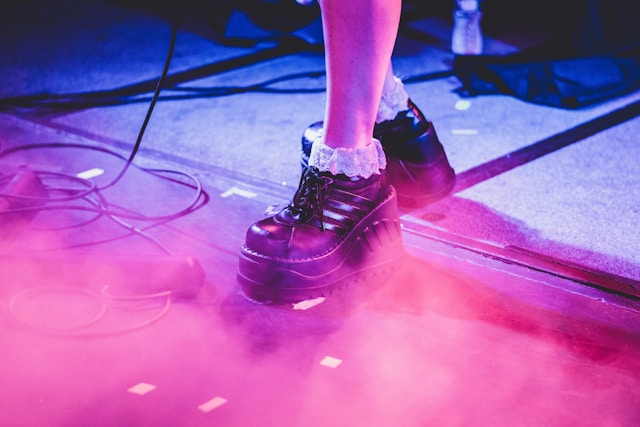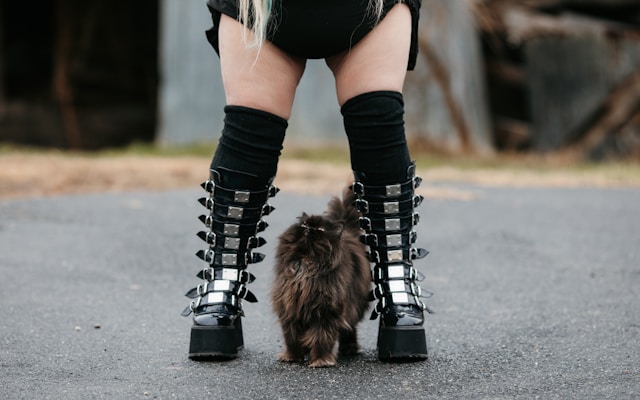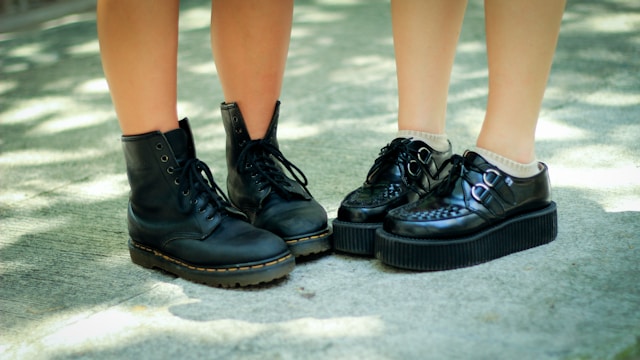
In the shadowed alleys of contemporary culture, where rebellion and conformity clash in an endless dance, alternative gothic shoes emerge as the defiant symbols of subcultural identity. These are not merely items of clothing but badges of dissent, each style speaking volumes about the wearer's allegiance to a world apart from the mainstream. This discourse ventures into the depths of gothic, punk, emo, and other subversive fashion styles, exploring the multifaceted roles these footwear play in the grand narrative of modern subcultures.
Gothic Footwear: A Testament to Dark Elegance
Gothic shoes in Poland, with their dark allure and echoes of a Victorian past, serve as a conduit through which the gothic subculture expresses its fascination with the intersection of beauty and decay. Crafted from materials that whisper tales of nocturnal elegance—leather, velvet, accented with lace and buckles—these shoes are the guardians of a morose aesthetic. From ankle-high to knee-high boots, adorned with pointed toes and robust heels, gothic footwear navigates the delicate balance between historical homage and contemporary innovation. It embodies a yearning for a beauty that thrives in the shadows, a resistance against the ephemeral nature of modern fashion trends.

Photo by Reba Spike on Unsplash
Punk Footwear: The Boots of Rebellion
In stark contrast, punk shoes carry the banners of anarchy and outspoken expression. Their design, inherently utilitarian yet defiantly adorned with patches, studs, and spikes, articulates a narrative of resistance. This footwear, born from the urban battlefield, reflects a pragmatic approach to fashion, where durability meets a visceral expression of individual and political identity. Combat boots, sneakers, and steel-toe boots become the canvas upon which the punk ethos is etched, a visual manifesto of defiance against the sanitized narratives of mainstream society.
Emo Footwear: The Quiet Rebellion of the Soul
Emo shoes, with their understated aesthetics and allegiance to the emotive currents of the subculture, speak of a rebellion that is introspective. Canvas sneakers and slim-profile boots, often adorned with the symbols of indie bands and personal motifs, serve as the footwear of choice. These shoes, less ostentatious than their gothic and punk counterparts, nonetheless articulate a profound connection to the emo ethos—an intense exploration of emotion and identity through the lens of music and fashion. Emo footwear, in its simplicity, underscores a nuanced resistance to the superficiality of mainstream culture, opting instead for a more personal, reflective form of expression.
Fusion Across Subcultures: The Melting Pot of Alternative Footwear
The landscape of alternative gothic shoes is marked by a vibrant fusion of subcultural influences, from the neon hues of cybergoth to the retro-futurism of steampunk. This amalgamation of styles, where Victorian elegance meets industrial pragmatism, reflects a broader narrative of subcultural evolution. Alternative footwear, in its myriad forms, becomes a testament to the dynamic interplay between different subcultural identities, a celebration of diversity and innovation in the face of a homogenizing mainstream.

Photo by Syd Wachs on Unsplash
In Conclusion: Shoes as Symbols of Subcultural Identity
The discourse on alternative gothic shoes reveals a rich tapestry of rebellion, identity, and diversity. Each style of footwear, from the dark elegance of gothic boots to the raw defiance of punk and the introspective simplicity of emo, serves as a key to understanding the complex narratives of modern subcultures. These shoes are more than mere accessories; they are declarations of belonging, acts of resistance, and celebrations of an identity that refuses to be diluted by the mainstream. In the grand narrative of alternative fashion, gothic, punk, and emo shoes stand as proud symbols of a culture that continually redefines the boundaries of expression and community.
Photo by Robbie Noble on Unsplash








